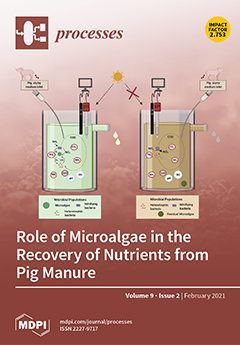In a tropical rainforest environment, different storage strategies are often adopted in the preservation of primary processed food crops, such as maize, sorghum, etc., after drying and dehulling to increase shelf-life. For breadfruit seeds (
Treculia Africana), the current challenge is identifying
[...] Read more.
In a tropical rainforest environment, different storage strategies are often adopted in the preservation of primary processed food crops, such as maize, sorghum, etc., after drying and dehulling to increase shelf-life. For breadfruit seeds (
Treculia Africana), the current challenge is identifying the most appropriate short-term storage and packaging methods that can retain the quality of stored products and extend shelf-life. In this regard, we compared the performance of a plastic container, a weaved silo bag and a locally developed silo bin for the short-term storage of parboiled, dehulled and dried breadfruit seeds treated with locally sourced and affordable alligator pepper (
Zingiberaceaeaframomum melegueta) and bitter kola (
garcinia) powder as preservatives. We show that the concentration of CO
2 was lower in the silo bin treated with 150 g alligator pepper and higher in the silo bag-treated with 100 g bitter kola nut. A higher CO
2 concentration resulted in limited oxygen availability, higher water vapor, and a higher heat release rate. Non-treated bag storage had the highest average mold count of 1.093 × 10
3 CFU/mL, while silo bin-stored breadfruit treated with 150 g of alligator pepper had the lowest mold count of 2.6 × 10
2 CFU/mL. The storage time and botanical treatments influenced both the crude protein and crude fiber content. Average insect infestations were low (0–4.5) in the silo bin with breadfruits treated with alligator pepper powder, as the seeds seemed to continue to desorb moisture in storage, unlike in other treatments. The obtained results revealed the high potential of alligator pepper (
Zingiberaceaeaframomum melegueta) as a botanical insecticide in preventing insect infestation and mold growth in stored breadfruit instead of using synthetic insecticide. An aluminum silo bin with alligator pepper powder is recommended to store dried and dehulled breadfruit seeds as a baseline for other tropical crops.
Full article





